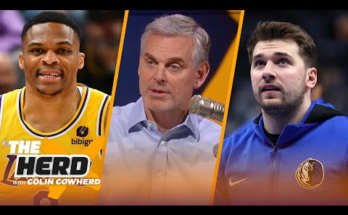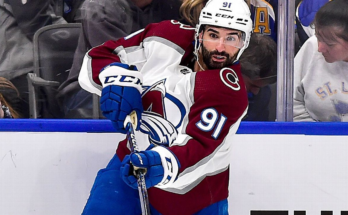One of the greatest imbalances in the Yankees’ season to date has been their offensive production against left versus right-handed pitching. While they’ve mashed lefties, they’ve struggled to do much against right-handed pitching. Against southpaws, the Yankees have the third-best wRC+ in the majors (117), but only the 17th-ranked wRC+ against righties (92). Last year, the Yankees, were the fourth-best-hitting team in baseball against righties (122 wRC+), but just the 19th-best against lefties.
Part of this drastic drop-off has to do with some serious regression from significant contributors to the 2020 Yankees. After an OPS of greater than 1.000 against lefties and righties last season, DJ LeMahieu’s OPS against lefties has fallen to .742 while his OPS against righties has fallen to .684. For his career, he’s been slightly better against lefties than righties, suggesting that last season’s small sample size power surge was an outlier in more ways than one. Not only has DJ never hit for so much power in a season, but he’s also never before hit as well against righties.
Aaron Judge is having arguably his best offensive season since 2017, overcoming a 40-point OPS dropoff against righties by absolutely clobbering lefties. Like DJ, Judge has also a been smidge better against lefties than he has against righties over the course of his career.
Luke Voit’s reverse splits — better hitting as a righty against righties than against lefties — buoyed the Yankees’ production against righties last year, but injuries have marred an unproductive campaign for him this year.
Gio Urshela owned significant reverse splits across his past two seasons but has seen those rates flip this year. Gleyber Torres hasn’t been great against anybody, but he’s been downright awful against righties with an OPS more than 100 points worse against lefties than righties.
Add in Giancarlo Stanton and Gary Sánchez and you’ve got yourself a lineup of at least seven right-handed hitters, primed to mash lefties but susceptible to especially potent right-handed pitching. Voit’s replacements haven’t hit anybody, nor has Brett Gardner (the lone true lefty on the pre-deadline roster) or any of his backup outfield cohorts, save for the switch-hitting Greg Allen in his 30 at-bats as a Yankee.
In advance of the trade deadline, the Yankees dealt for not one, but two left-handed bats to ameliorate some of the lopsided nature of the Yankees’ lineup. While no one player can patch the Yankees’ myriad flaws, Joey Gallo comes about as close as was available in this market. However, as explained in Mike Petriello’s piece for MLB.com, Gallo’s all-or-nothing approach to making contact undermines some of the benefits most lefty sluggers would get from playing in Yankee Stadium’s homer-friendly confines. Gallo has more no-doubt home runs — those that would clear all 30 stadiums’ fences — than all but three other big leaguers this season. However, he only would have gained a couple of extra homers this season if he’s played his home games in the Bronx instead of Arlington.
:no_upscale()/cdn.vox-cdn.com/uploads/chorus_asset/file/22752072/Screen_Shot_2021_07_30_at_4.25.11_PM.png)
Also, unlike the archetypical lefty slugger, Gallo’s as good of a hitter against lefties as he is righties. His career OPS against lefties is just seven points better than it is against righties, despite being about 40 points higher this season. Moving forward, it’s reasonable to expect Gallo will be about neutral in his lefty-righty splits. While he lacks any lopsidedness of his own to counterbalance the Yankees’ inability to hit righties, his OPS of greater than .850 against either-armed pitchers will be a boost to the Yankees no matter who they face.
Unlike Gallo, the Yankees’ other offensive acquisition, Anthony Rizzo, possesses exactly the kind of career splits typical of a left-handed hitting first baseman. The three-time All-Star owns a .878 OPS against righties and a .787 line against lefties. However, in nearly 400 plate appearances this season, he’s posted some of the most extreme reverse splits you’ll ever see with a .968 OPS against lefties and a .727 OPS against righties. Considering this season’s statistical departure from the rest of his career, it’s tough to say whether Rizzo’s primed to prefer hitting lefties moving forwards, or if he’s riding the tail end of an aberrant stretch of baseball. Either way, he’s a whole lot better than Chris Gittens or an injured and unavailable Luke Voit — especially on defense.
Because Rizzo hits the ball with less authority than Gallo, he may benefit more from Yankee Stadium’s shallow right field corner relative to his talent and batted ball profile than even Gallo, despite putting the ball in the air more softly and less often.
:no_upscale()/cdn.vox-cdn.com/uploads/chorus_asset/file/22752075/Screen_Shot_2021_07_30_at_4.26.20_PM.png)
According to this spray chart of all of Rizzo’s home fly balls this season overlaid at Yankee Stadium, he would have gained at least a couple extra homers, like Gallo, on fewer fly balls.
Focusing too much on handedness and lineup construction can limit one’s view of the forest through the trees. While the Yankees may not have balanced out their lefty-righty splits, they traded for a couple of bats before the deadline who can help boost their numbers against righties, the side from which they need the most help. Decidedly more important than evening out the lineup is scoring runs, and in grabbing a couple of good hitters, the Yankees gave themselves a better chance to do exactly that.


